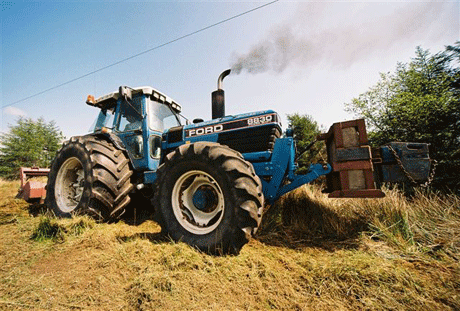Sizing up your carbon footprint: The Food Chain’s next big thing for farmers

A new movement in the food chain is gathering momentum. Consumers are telling retailers they want to know how green their food is. Retailers are turning to food businesses to measure the carbon footprint of their products. It’s only a matter of time before farm businesses have to face the question.
The economic situation is forcing consumers to change their habits. They’re not running headlong, as some have feared, for cheap food and value products. But they are thinking a lot harder about their food choices.
As Sainsbury’s chief executive Justin King puts it, consumers want value without compromising their values. “There’s no doubt that consumers are adapting to pressures on household budgets. They are changing their habits.”
Bargain hunt
Such “savvy shoppers” are spending more time bargain hunting and cooking more meals themselves, instead of relying on convenience food and ready meals. “But this is not the same as down-trading,” says Mr King. “Shoppers are definitely not compromising their values.”
This is all a long way up the food chain from the farm gate – for now. But it is emerging as a new priority among farmers working closely with retailers. Take, for instance, Sainsbury’s Dairy Development Group, which includes some 350 milk producers supplying the retailer through Dairy Crest and Robert Wiseman Dairies.
According to Sainsbury’s Allison Austin, speaking at an ADAS briefing last week, the retailer has already begun measuring the carbon impact of the dairy farms in the group. It is looking to help its dairy farmers make a reduction of 10% a year in carbon emissions. “What’s interesting is that it’s not the biggest or highest-yielding herds that are most carbon intensive.”
Benchmarking
At this stage the methodology for measuring carbon footprinting has been developed, and there are still questions over what data it will use to benchmark against. But one thing is certain – a big part of a food product’s carbon footprint is created on farm – and there can be little doubt that, sooner or later, farmers will need to engage with this.
The message from retailers is clear: We’re not asking for farmers’ carbon footprints – yet.

Carbon footprinting
- So what is a carbon footprint?
A carbon footprint is a measure of total greenhouse gas emissions – not just CO2 – involved in manufacturing a product or running a business, in fact any human activity. The “life cycle” concept of a carbon footprint means that the measurement includes so-called “embedded” emissions. An example of this on farm might be a carbon consequence figure placed on the manufacture of a tractor – it’s already been made, and therefore has had a carbon impact. Although a potato planted behind this tractor did not cause those emissions to be created, they are indirectly involved in the production of that potato.
- Why should I care?
Whichever side of the climate change debate you sit on, this is what consumers are telling retailers they want to know. Food manufacturers and processors are next in line, and being expected to know the carbon impact of their products. You can be sure that sooner or later, farmers will be increasingly asked for this information.
- I’m not convinced.
Well, there are potentially more immediate benefits than saving the planet. Carbon footprinting is based in a large part on energy efficiency – which could lead to major savings in farm energy bills – and help cash flows struggling to deal with higher fertiliser bills.
- It won’t have any impact on me.
Not yet, but it certainly could. For instance, some knowledge of the carbon footprint of producing a tonne of wheat or a litre of milk could well become expected of producers who want the benefits of joining a direct supply group or working with a retailer or food business.
- But I don’t – I’m a commodity producer.
True, but it’s not unreasonable to suppose that some degree of carbon footprint measurement could form part of future food assurance standards – in the same way animal welfare and food safety criteria are now.
- How is a carbon footprint measured?
An ongoing project, commissioned by DEFRA and led by ADAS and The Carbon Trust has developed something called PAS 2050. This is something like a British Standard, and is effectively a methodology designed to measure life-cycle greenhouse gas emissions of goods and services. This is likely to become the standard model adopted by food businesses to assess their carbon footprints.
- Is it sound?
Yes, but it does make assumptions where necessary – for instance it stops short of measuring the carbon footprint of the lathe in the factory that made the nut that holds the wheel on the tractor. It only aims to account for the carbon emissions tied up in the direct manufacture of a food product.
- How can I try to measure my carbon footprint?
To find out more, and see how carbon footpritns have already been measured in different food businesses, visit www.adas.co.uk/carbon
Another good place is the Country Land & Business Association’s site. Earlier this year the CLA unveiled its Carbon Accounting for Land Managers (CALM) calculator – it’s a seven-step process.
And click here to find out more about PAS 2050
